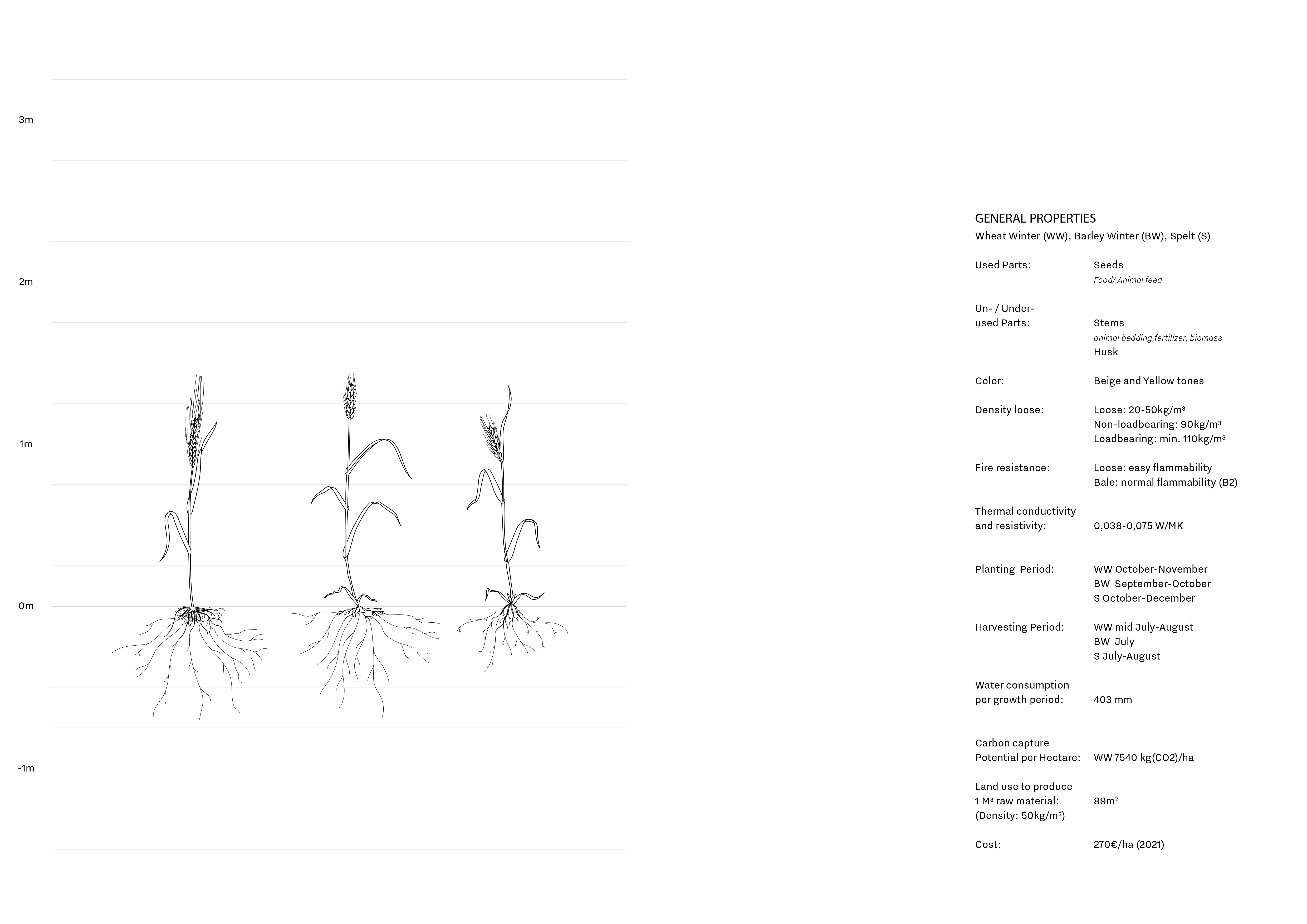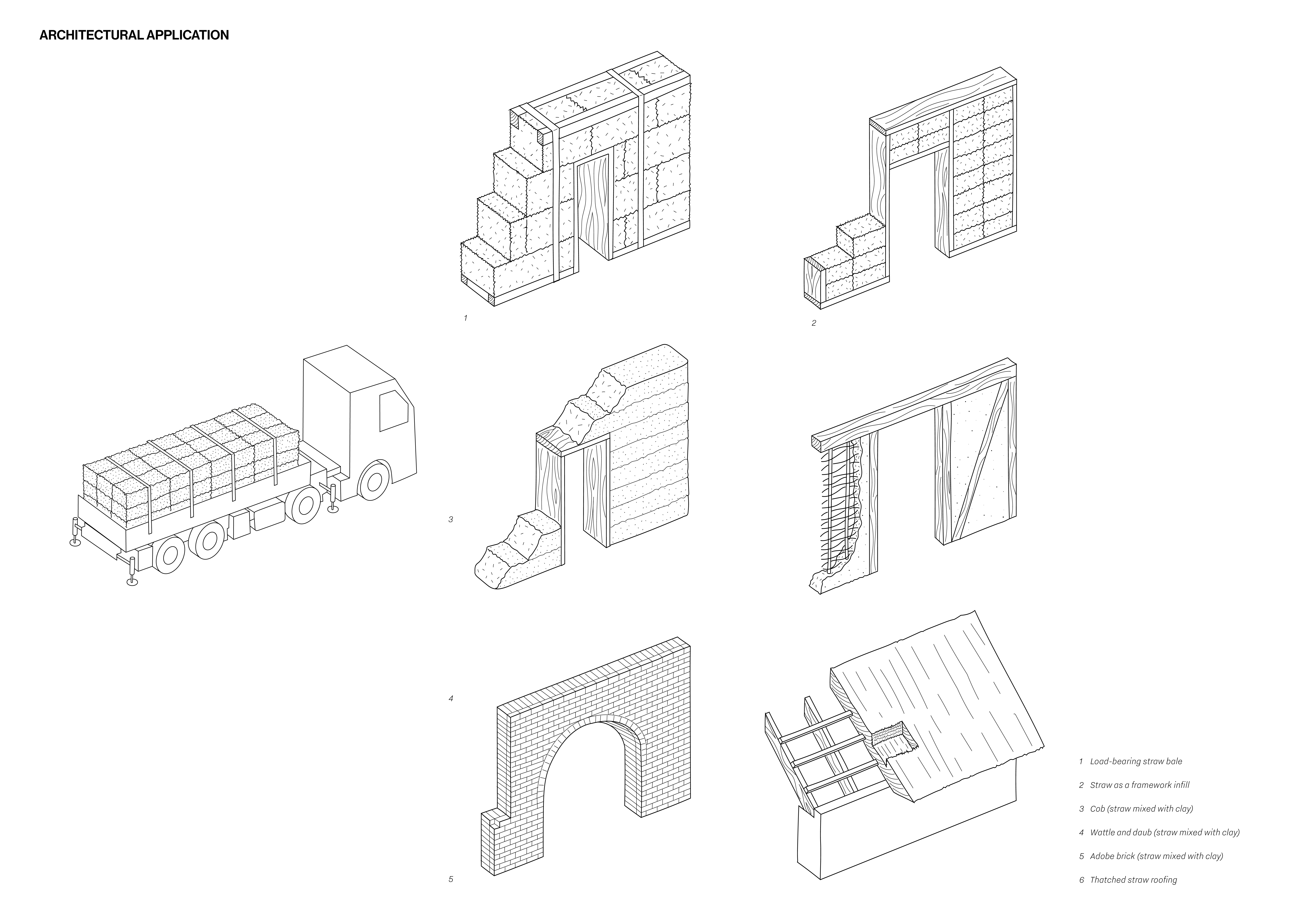Straw
Straw is a byproduct of agriculture, consisting of the dry stem of cereal plants that remain after the grain and chaff have been removed. It has a number of qualities that make it an excellent building material. Thermal insulation is one of its primary features; straw bales can keep rooms cool in the summer and warm in the winter. When properly treated, the straw is extremely resilient and has a high load- bearing capacity for building. It‘s frequently used in straw bale building, which involves straw bales to make walls that are subsequently covered with clay or lime plaster. Straw grows rapidly and consistently, storing carbo not just in the plant‘s leaves but also in its roots. When straw is cut and the land is not ploughed, the plant‘s roots remain in the ground, depositing carbon deep into the soils. Although increasingly put to use by farmers, straw is one of the most abundantly available plant fibres that can be used both as insulation as well as the structure of a building.







